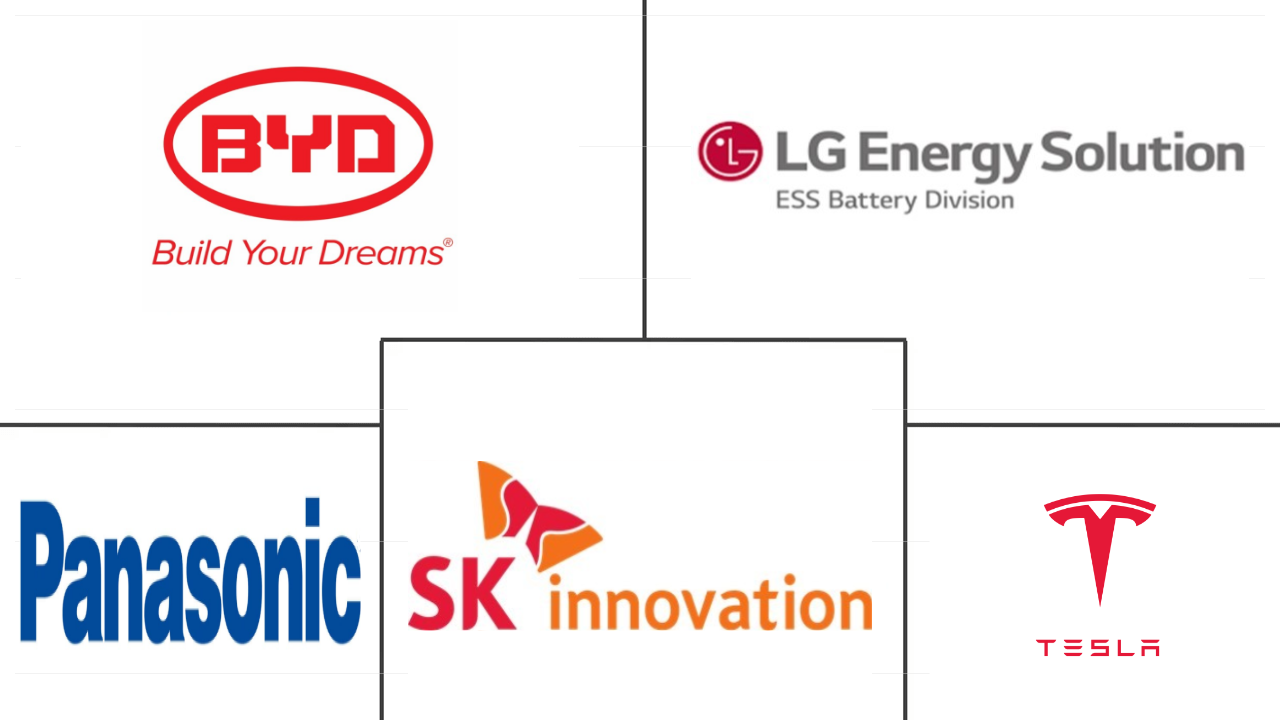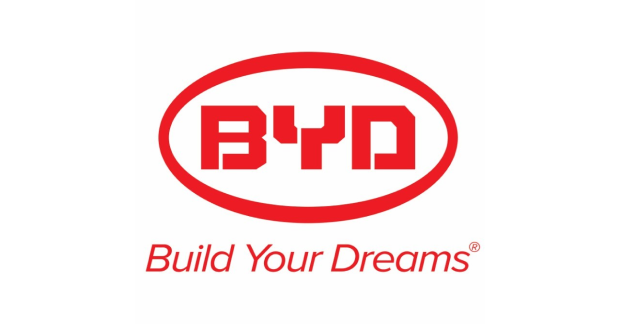Market Size of asia-pacific nmc battery pack Industry
|
|
Study Period | 2017 - 2029 |
|
|
Market Size (2024) | USD 16.66 Billion |
|
|
Market Size (2029) | USD 25.97 Billion |
|
|
Largest Share by Propulsion Type | BEV |
|
|
CAGR (2024 - 2029) | 9.28 % |
|
|
Largest Share by Country | Japan |
Major Players |
||

|
||
|
*Disclaimer: Major Players sorted in no particular order |
Asia-Pacific NMC Battery Pack Market Analysis
The Asia-Pacific NMC Battery Pack Market size is estimated at 16.66 billion USD in 2024, and is expected to reach 25.97 billion USD by 2029, growing at a CAGR of 9.28% during the forecast period (2024-2029).
16.66 Billion
Market Size in 2024 (USD)
25.97 Billion
Market Size in 2029 (USD)
14.79 %
CAGR (2017-2023)
9.28 %
CAGR (2024-2029)
Largest Segment by Body Type
86.66 %
value share, Passenger Car, 2023
Passenger car are the most popular body type in APAC NCM battery packs sales due to reasonable prices, government subsidies, benefits over petrol cars, etc.
Largest Segment by Propulsion Type
89.31 %
value share, BEV, 2023
BEVs dominate the APAC NCM battery pack market owing to their cheap cost, minimal maintenance, little carbon impact, and no fuel expenditures.
Largest Segment by Battery Form
99.59 %
value share, Prismatic, 2023
Due to its cheap cost, high safety rating, simplicity, and density, prismatic cells are majorly used in APAC NMC battery packs market.
Leading Market Player
17 %
market share, BYD Company Ltd., 2022

Due to its wide reach, great production capability, and large Asian exports, BYD dominates APAC NMC battery packs market.
Largest Segment by Capacity
82.25 %
value share, 15 kWh to 40 kWh, 2023
Usage of this capacity batteries in the affordable electric cars (have most of the sales in all EVs) has acquired majority of share in the APAC NMC battery packs market.
Growing demand for NCM batteries in APAC due to government regulations and increase in BEV and PHEV markets, with Asia-based producers such as CATL, LG Chem, and Samsung SDI Leading the charge
- The demand for different types of batteries has increased as a result of the rapid growth of electric mobility in numerous APAC nations over the past few years. Few automakers are choosing NCM batteries for BEV and PHEV models, although the battery type is still in the early stages of deployment to vehicles compared to other batteries like LFP and NMC. Due to government regulations that are strict and the impending prohibition on fossil fuel vehicles, more individuals are choosing BEVs and PHEVs. These considerations have led to a small increase in the NCM battery type in a few vehicles in the APAC region from 2017 to 2021.
- Japan and China are among the countries with a growing demand for NCM batteries for PHEV and BEV in Asia-Pacific. In addition, some of the leading producers of NCM batteries, such as CATL, LG Chem, and Samsung SDI, are from Asia. The demand for BEV and PHEV is rising gradually in various countries, including India, Thailand, and South Korea, which has also helped to increase the demand for NCM batteries throughout the APAC region. As a result, the regional market for NCM batteries used in electric vehicles increased in 2022 over 2021.
- Various automakers are launching new products which are expected to enhance the battery industry. In February 2023, Chinese automaker BYD unveiled the 2023 model Tang, which is equipped with a plug-in hybrid system powered by the NCM battery pack. Such launches in other countries are expected to accelerate the demand and sales of NCM batteries in BEV and PHEV during the forecast period in the region.
Japan, South Korea, India, and Thailand contribute to the expansion of the Asia-Pacific NCM battery pack market
- Asia-Pacific presents a thriving market for battery packs, driven by factors such as government support, strong domestic demand, and a focus on electric vehicle adoption. As the demand for electric vehicles continues to rise and technology advancements in battery packs continue, Asia-Pacific is expected to play a pivotal role in shaping the future of the global electric vehicle industry.
- China stands out as a dominant player in the battery pack market, with consistently high market values. China's rapid growth can be attributed to several factors, including government support for electric vehicles, a large consumer market, and a robust domestic manufacturing ecosystem. The country has made substantial investments in electric vehicle production, leading to increased demand for battery packs.
- Japan and South Korea also contribute significantly to the Asia-Pacific battery pack market. Both countries have experienced steady growth in market value over the years. These countries have well-established automotive industries, technological expertise, and strong government support for EV adoption, driving the demand for battery packs. India's battery pack market is gaining momentum as the country focuses on electric vehicle adoption and renewable energy targets. With supportive government policies and increasing consumer awareness, the demand for battery packs is on the rise. Additionally, Thailand's commitment to becoming a regional leader in electric mobility presents ample opportunities for the growth of the battery pack market.
Asia-Pacific NMC Battery Pack Industry Segmentation
Bus, LCV, M&HDT, Passenger Car are covered as segments by Body Type. BEV, PHEV are covered as segments by Propulsion Type. 15 kWh to 40 kWh, 40 kWh to 80 kWh, Above 80 kWh, Less than 15 kWh are covered as segments by Capacity. Cylindrical, Pouch, Prismatic are covered as segments by Battery Form. Laser, Wire are covered as segments by Method. Anode, Cathode, Electrolyte, Separator are covered as segments by Component. Cobalt, Lithium, Manganese, Natural Graphite, Nickel are covered as segments by Material Type. China, India, Japan, South Korea, Thailand, Rest-of-Asia-Pacific are covered as segments by Country.
- The demand for different types of batteries has increased as a result of the rapid growth of electric mobility in numerous APAC nations over the past few years. Few automakers are choosing NCM batteries for BEV and PHEV models, although the battery type is still in the early stages of deployment to vehicles compared to other batteries like LFP and NMC. Due to government regulations that are strict and the impending prohibition on fossil fuel vehicles, more individuals are choosing BEVs and PHEVs. These considerations have led to a small increase in the NCM battery type in a few vehicles in the APAC region from 2017 to 2021.
- Japan and China are among the countries with a growing demand for NCM batteries for PHEV and BEV in Asia-Pacific. In addition, some of the leading producers of NCM batteries, such as CATL, LG Chem, and Samsung SDI, are from Asia. The demand for BEV and PHEV is rising gradually in various countries, including India, Thailand, and South Korea, which has also helped to increase the demand for NCM batteries throughout the APAC region. As a result, the regional market for NCM batteries used in electric vehicles increased in 2022 over 2021.
- Various automakers are launching new products which are expected to enhance the battery industry. In February 2023, Chinese automaker BYD unveiled the 2023 model Tang, which is equipped with a plug-in hybrid system powered by the NCM battery pack. Such launches in other countries are expected to accelerate the demand and sales of NCM batteries in BEV and PHEV during the forecast period in the region.
| Body Type | |
| Bus | |
| LCV | |
| M&HDT | |
| Passenger Car |
| Propulsion Type | |
| BEV | |
| PHEV |
| Capacity | |
| 15 kWh to 40 kWh | |
| 40 kWh to 80 kWh | |
| Above 80 kWh | |
| Less than 15 kWh |
| Battery Form | |
| Cylindrical | |
| Pouch | |
| Prismatic |
| Method | |
| Laser | |
| Wire |
| Component | |
| Anode | |
| Cathode | |
| Electrolyte | |
| Separator |
| Material Type | |
| Cobalt | |
| Lithium | |
| Manganese | |
| Natural Graphite | |
| Nickel | |
| Other Materials |
| Country | |
| China | |
| India | |
| Japan | |
| South Korea | |
| Thailand | |
| Rest-of-Asia-Pacific |
Asia-Pacific NMC Battery Pack Market Size Summary
The Asia-Pacific NMC Battery Pack Market is experiencing significant growth, driven by the rapid expansion of electric mobility across the region. This growth is fueled by increasing demand for battery electric vehicles (BEVs) and plug-in hybrid electric vehicles (PHEVs), supported by stringent government regulations and a shift away from fossil fuel vehicles. Countries like Japan and China are at the forefront of this demand, with leading battery producers such as CATL, LG Chem, and Samsung SDI contributing to the market's expansion. The introduction of new vehicle models equipped with NMC battery packs, such as BYD's 2023 model Tang, is expected to further accelerate market growth. The Asia-Pacific region is poised to play a crucial role in the global electric vehicle industry, with China, Japan, and South Korea being key players due to their strong domestic demand, government support, and advanced technological capabilities.
The market landscape is characterized by a competitive environment with major companies like BYD, Toyota Group, Tesla, Wuling, and Honda holding significant market shares. BYD leads the market with a substantial portion of EV sales, supported by its financial strength and extensive sales network. The preference for electric SUVs is on the rise, with models like Tesla's Model Y and BYD's Song DM gaining popularity due to their features and competitive pricing. The market is also witnessing a growing interest in compact SUVs, reflecting the Asian consumer's preference for utility and spaciousness. The fragmented nature of the market, with the top five companies holding a quarter of the share, indicates a dynamic and evolving industry landscape, with opportunities for growth in countries like India, Thailand, and others focusing on electric vehicle adoption and renewable energy targets.
Asia-Pacific NMC Battery Pack Market Size - Table of Contents
-
1. MARKET SEGMENTATION (includes market size in Value in USD and Volume, Forecasts up to 2029 and analysis of growth prospects)
-
1.1 Body Type
-
1.1.1 Bus
-
1.1.2 LCV
-
1.1.3 M&HDT
-
1.1.4 Passenger Car
-
-
1.2 Propulsion Type
-
1.2.1 BEV
-
1.2.2 PHEV
-
-
1.3 Capacity
-
1.3.1 15 kWh to 40 kWh
-
1.3.2 40 kWh to 80 kWh
-
1.3.3 Above 80 kWh
-
1.3.4 Less than 15 kWh
-
-
1.4 Battery Form
-
1.4.1 Cylindrical
-
1.4.2 Pouch
-
1.4.3 Prismatic
-
-
1.5 Method
-
1.5.1 Laser
-
1.5.2 Wire
-
-
1.6 Component
-
1.6.1 Anode
-
1.6.2 Cathode
-
1.6.3 Electrolyte
-
1.6.4 Separator
-
-
1.7 Material Type
-
1.7.1 Cobalt
-
1.7.2 Lithium
-
1.7.3 Manganese
-
1.7.4 Natural Graphite
-
1.7.5 Nickel
-
1.7.6 Other Materials
-
-
1.8 Country
-
1.8.1 China
-
1.8.2 India
-
1.8.3 Japan
-
1.8.4 South Korea
-
1.8.5 Thailand
-
1.8.6 Rest-of-Asia-Pacific
-
-
Asia-Pacific NMC Battery Pack Market Size FAQs
How big is the Asia-Pacific NMC Battery Pack Market?
The Asia-Pacific NMC Battery Pack Market size is expected to reach USD 16.66 billion in 2024 and grow at a CAGR of 9.28% to reach USD 25.97 billion by 2029.
What is the current Asia-Pacific NMC Battery Pack Market size?
In 2024, the Asia-Pacific NMC Battery Pack Market size is expected to reach USD 16.66 billion.

